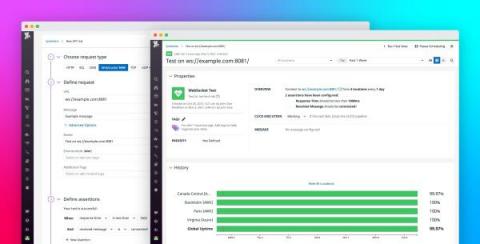Operations | Monitoring | ITSM | DevOps | Cloud
Networks
The latest News and Information on IT Networks and related technologies.
How the San Francisco Giants Knocked IT... to the Cloud
11 Reasons Why You Should Migrate to Next-Generation DX APM
The current version of DX APM continues a long history of innovation for APM technology. More than two decades ago, the solution was the pioneer in byte code instrumentation. DX APM is now a next-generation solution for today’s complex and hybrid enterprise environments. Figure 1: Broadcom’s DX APM has evolved from Wily Technology’s invention of byte code instrumentation-based APM, which was introduced in 1998.
Introducing DX Unified Infrastructure Management
Today, we are launching the newest feature of Broadcom’s Enterprise Software Academy: DX Unified Infrastructure Management (DX UIM) resource pages. DX UIM is redefining infrastructure management with full-stack observability, an open architecture, modern admin and operator consoles, and zero-touch configuration.
Do it Yourself: Generic REST API-Based Monitoring
DX Unified Infrastructure Management (DX UIM) has more than 150 monitoring probes, which enables IT administrators to monitor everything from traditional mainframe servers to modern hybrid clouds running on a wide range of platforms and operating systems. Traditionally, a separate probe has been required to monitor each specific technology. That’s because the interface that retrieved monitoring metrics was either proprietary or technology specific.
Full-Stack Infrastructure Observability with DX Unified Infrastructure Management
The IT infrastructure landscape has seen tremendous changes over last few years due to evolving technologies, newer business models, and ever-changing market demands. Business, market, and consumer demands are pushing such IT advancements as cloud, mobility, and IoT.
Managing the Complex Networks of Financial Services
Understanding Alamofire Swift and Why is it So Powerful for iOS Development
Run UDP and WebSocket API tests to monitor latency-critical applications
Datadog Synthetic Monitoring allows you to proactively monitor your applications so that you can detect, troubleshoot, and resolve any availability or performance issues before they impact your end users. With our API test suite, you can send simulated HTTP requests to your API endpoints, check the validity of SSL certificates, verify the performance and correctness of DNS resolutions, test TCP connections, and ping endpoints to detect server connectivity issues.
Network AF, Episode 5: Building relationships as an internet analyst with Doug Madory
Network AF welcomes Doug Madory to the podcast. Doug is a veteran, a researcher, a writer and Kentik’s director of internet analysis. With his start in the U.S. Air Force within its Information War Center, Doug has now been working in the networking industry for 12 years. After the Air Force, Doug went on to work for Renesys, which was acquired by Dyn, which was later acquired by Oracle.








